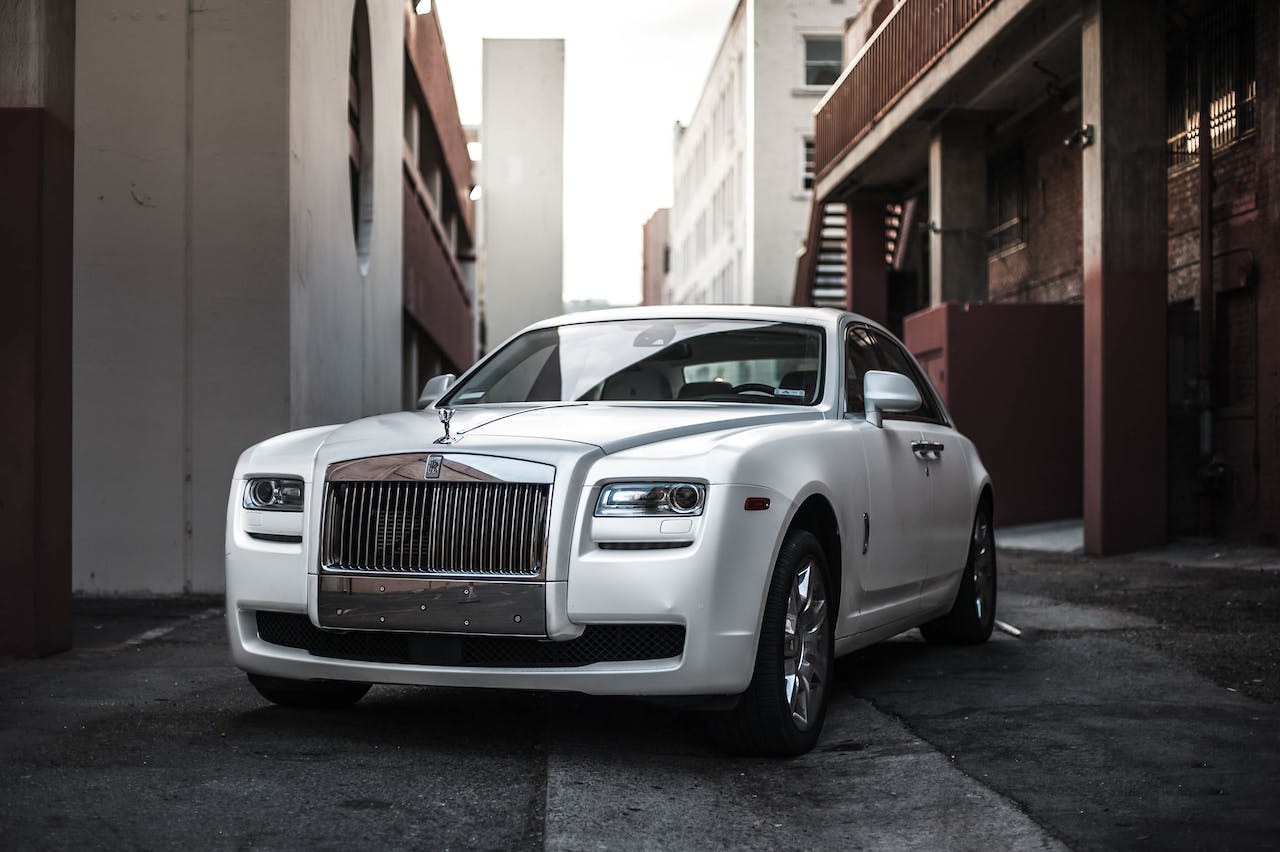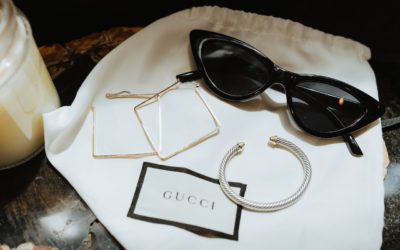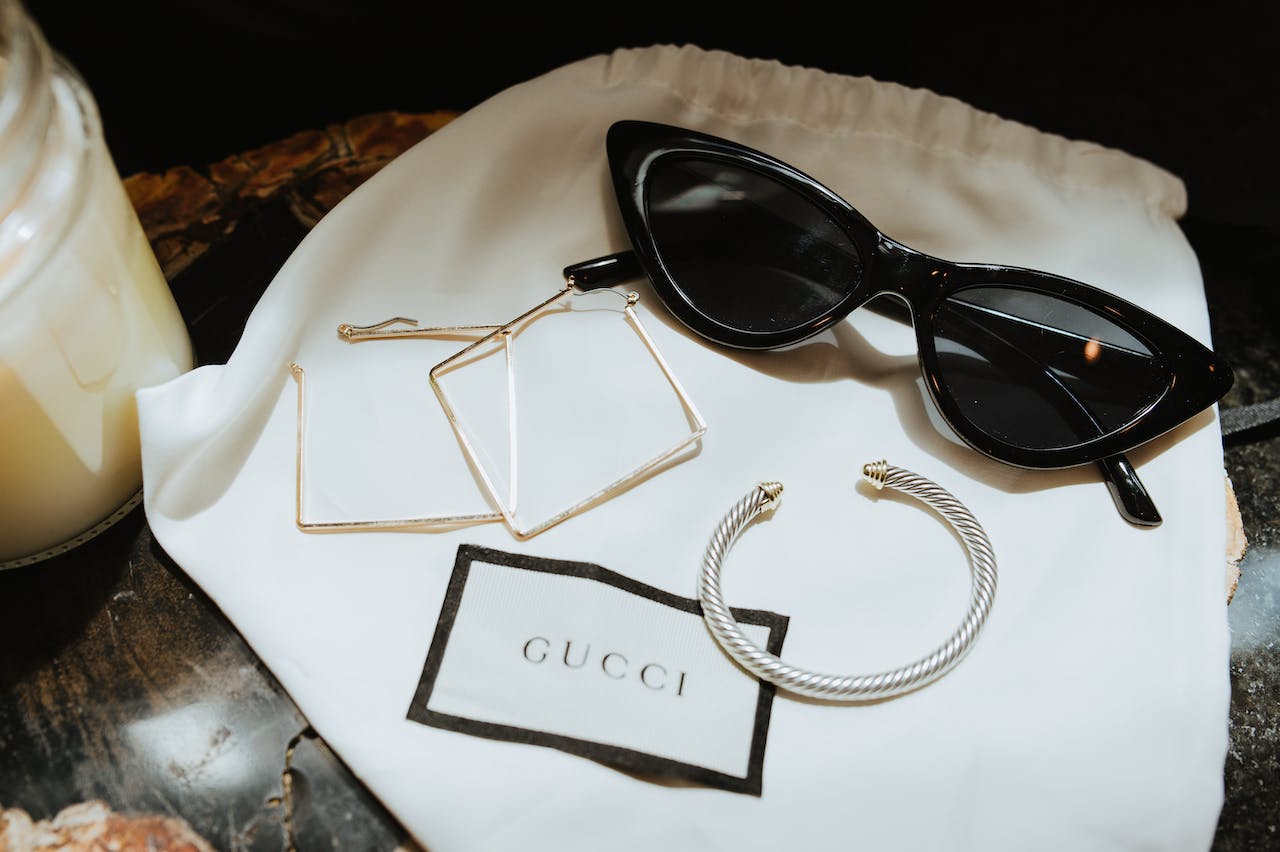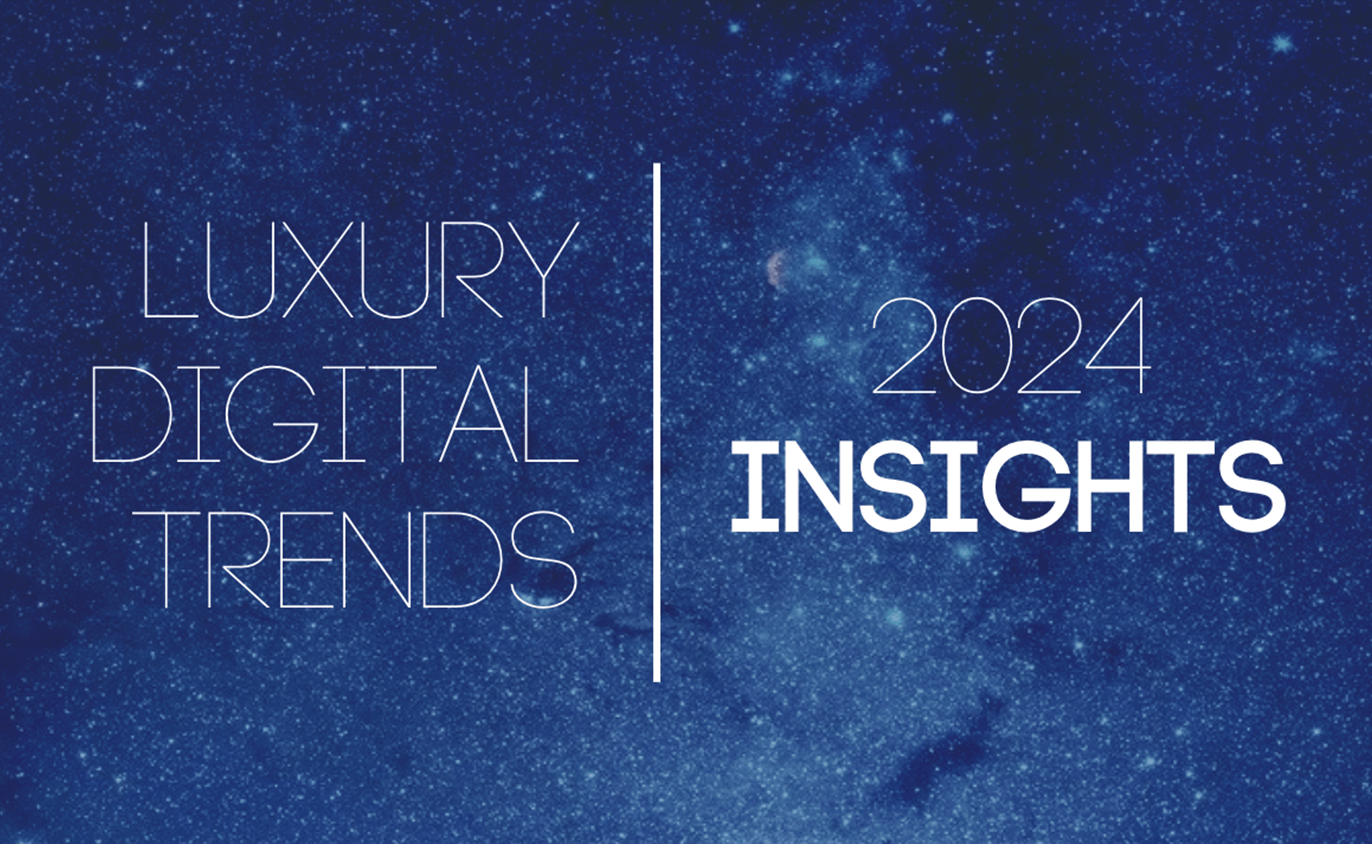The luxury Car Market is the most dynamic and profitable segment in the automotive industry, expected to grow up to 14 percent by 2031, but what are the trends and opportunities that really move the needle?
There are many risks involving manufacturers’ own systems, target market fluctuations, and pressure on the profit margins due to innovation, which may impact reaching the company’s and industries’ goals.
In this article, we will explore the current state and future outlook of the luxury car market, focusing on the trends, challenges and opportunities for 2024 and beyond. So, keep on reading!
Luxury Car Market Trends Topics:
- The Growth of the Luxury Car Market
- Luxury Car Market by Region Segmentation
- The Electrification of the Luxury Car Market
- Electrification = “Guilt-free” Luxurious Experience?
- The Innovation of the Luxury Car Market
- Luxury Car Market Challenges
- Luxury Car Market Opportunities and Recommendations
- Conclusion
The Growth of the Luxury Car Market
The luxury car market has grown steadily over the past decade, outperforming the mass market segment, which has stagnated or declined in many regions. According to a report by McKinsey, the luxury car market, in which the luxury car segmentation is between $80,000 to $500,000, is expected to grow at a compound annual growth rate (CAGR) of 8 to 14 percent from 2021 to 2031, reaching a global sales volume of 5.2 million units by 2031. In contrast, the non-luxury market for cars that cost less than $80,000 is expected to remain virtually flat, with about 1 percent growth per year.
A key reason why the luxury car market is growing is due to the ultra-wealthy and wealthy individuals (HNWI) with assets ranging from $1 million to $30 million in investable assets.
The main driver of the luxury car market growth is the increasing number of high-net-worth individuals (HNWI) and ultra-high-net-worth individuals (UHNWI) worldwide, who have the purchasing power and the desire to own luxury vehicles. According to the same report it is expected that both groups, UHNWIs and HNWIs will have the highest growth between 2021 and 2026.
But where are these wealthy individuals coming from? Mainly Asia for the UHNWI at 33 percent compared with 28 and 27 percent in the United States and the European Union, respectively. For Japan, although a decrease is expected, it will have the second largest number of ultra-wealthy or UHNWI individuals in Asia, behind China, according to the latest annual Wealth Report by Knight Frank.
The basic trends point to sales growth for luxury automobiles has shifted from North America and Europe to Asia and the Middle East.
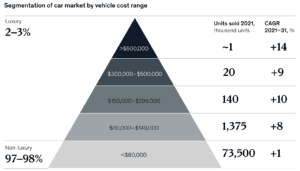
Luxury Car Market Segmentation by Price 2021 to 2031 – McKinsey
Luxury Car Market by Region Segmentation
The growth of the luxury car market is also influenced by the regional and country-level trends and opportunities. China is expected to be the fastest-growing market for luxury and ultra-luxury vehicles by 2031, with a CAGR of about 13 percent. By then, China’s share of the global luxury car market volume is expected to reach 30 to 35 percent. The reason? The Chinese market is highly competitive and thus, more new-product launches and innovation has kept the consumers paying attention.
Other emerging markets, such as India, Brazil, Russia, and Southeast Asia, are also expected to show strong growth potential, as their economies recover from the COVID-19 pandemic and their middle class expands.
The Electrification of the Luxury Car Market
One of the most significant trends in the luxury car market is the electrification of the powertrain, which refers to the use of battery electric vehicles (BEV), plug-in hybrid electric vehicles (PHEV), or fuel cell electric vehicles (FCEV) instead of conventional internal combustion engine (ICE) vehicles. The electrification of the luxury car market is driven by several factors, such as:
- Rising customer preferences for eco-friendly, efficient, and innovative vehicles, especially among younger and female buyers, who are more conscious of the environmental and social impact of their choices.
- Technological advancements in battery performance, charging infrastructure, and vehicle design, which enable luxury car manufacturers to offer more attractive and competitive electric models, with longer range, faster charging, and lower cost of ownership.
- Favorable policies and regulations in many countries and regions, which encourage or mandate the adoption of electric vehicles, through incentives, subsidies, tax breaks, or emission standards.
According to Oliver Wyman, the overall BEV penetration rate of all luxury and ultra-luxury vehicles was around 6 percent in 2021. It is expected to grow to 46 percent in 2031, with a CAGR of about 35 percent. The luxury and ultra-luxury BEV market will likely increase over the next decade, with a CAGR of about 35 percent, almost 10 times the CAGR expected for non-BEV.
Electrification = “Guilt-free” Luxurious Experience?
Some of the leading players in the luxury car market have already launched or announced their plans to launch new electric models with that either aim to be affordable and/or completely electric and “guilt-free”, such as Tesla, Porsche, Mercedes-Benz, BMW, Audi, Jaguar, Land Rover, Volvo, Lexus, and Bentley.
Some new entrants, such as Lucid, Rivian, Nio, and Polestar, have also emerged, offering innovative and disruptive electric vehicles that challenge established brands.
All of the companies seem to bet on electrification as it is a strong trend that Millenials and Gen Z women have been accustomed to in the Luxury space. Brands are combining it with price or Customer Experience, but only time will tell, which innovations are attractive to the consumer, differentiate the brand and impact the brand’s sales or bottom-line.
The Innovation of the Luxury Car Market
Another key trend in the luxury car market is the innovation of the vehicle features, functions, and experiences, which aim to enhance the value proposition and differentiation of the luxury vehicles. These innovations are enabled by the advancement of connected car, autonomous vehicle, shared mobility, and electrification (CASE) technologies, which offer new possibilities and opportunities for luxury car manufacturers to create and deliver superior products and services.
Some of the examples of the innovation of the luxury car market are:
- Development of advanced and intelligent software systems, such as Artificial Intelligence (AI), Machine Learning (ML), cloud computing, and over-the-air updates, which enable luxury car manufacturers to offer more personalized, interactive, and convenient features and functions, such as smart cockpit, voice control, gesture control, facial recognition, biometric authentication, and digital assistant.
- Introduction of new and enhanced vehicle usage experiences, such as battery-swapping, battery-as-a-service, car subscription, and car leasing, which provide more flexible, convenient, and cost-effective mobility solutions for customers, while creating new revenue streams and profit pools for luxury car manufacturers and service providers.
- Adoption of new and improved vehicle design and materials, such as lightweight, recyclable, and sustainable materials, which improve the vehicle performance, efficiency, and aesthetics, while reducing the environmental and social impact of the vehicle production and operation.
Luxury Car Market Challenges
Despite the growth and innovation of the luxury car market, there are also some challenges and risks that luxury car manufacturers need to overcome and mitigate, such as:
- Increasing competition and commoditization: as more players enter and offer similar or aggressively superior products and services (like Chinese OEMs), this erodes the brand loyalty and differentiation of the established players, resulting in decreasing margins and profitability.
- Changing of customer expectations and preferences: as customers become more demanding, diverse, and conscious and seek more value, quality, and uniqueness from their luxury vehicles, they are pressuring manufacturers to constantly innovate and adapt, forcing a shorter time-to-market.
- Uncertain and complex regulatory and political environments: different countries and regions have different rules and standards for electric vehicles, emissions, safety, data, and trade (including import duties), which create challenges and barriers for luxury car manufacturers to operate and expand in the global market.
Luxury Car Market Opportunities and Recommendations
Despite the challenges and risks of the luxury car market, there are also some opportunities and potentials that luxury car manufacturers can leverage and exploit, such as:
- Target Market fluctuations due to expansion and diversification, this will cause new segments and niches to emerge and grow, but while this might impact ROAS and other marketing costs, there opportunities for these new targets to be educated in the luxury EVs & autonomous vehicles, and luxury shared vehicles.
- Digitalization and personalization across the Customer Journey, as Machine Learning advances and platforms enable luxury car manufacturers to offer more customized and tailored products and services, the consumer expects an intuitive customer journey and it is expected to have faster online configurator, online delivery, online customer service, and online community, which enhances the satisfaction, and thus, loyalty and retention.
- Collaborations and partnerships among players in the luxury car market, as new ecosystems and networks form and evolve, such as cross-industry alliances, joint ventures, mergers and acquisitions, and co-creation initiatives, can help differentiate the Customer Experience. For example, aftermarket tuning company specializing in certain brands can help give that extra mile of physical personalization.
Conclusion
The luxury car market is becoming more dynamic, maintaining its profitability within the automotive industry. These luxury car manufacturers not only offer a range of premium vehicles but also is transforming more into a more personalised experience.
The luxury car market is expected to grow and innovate in the next decade, driven by the increasing number of high-net-worth individuals, the electrification of the powertrain, and the innovation of vehicle features, functions, and experiences.
However, it also faces some challenges and risks, such as increasing competition and commoditization, changing customer expectations and preferences, and the uncertain and complex regulatory and political environment. Therefore, luxury car manufacturers need to innovate with some strategies that might impact costs but they can also rely on the industry.
As an industry insider there are more opportunities that can be done across the Customer Journey and Customer Experience, if you’re interested, let’s talk!

